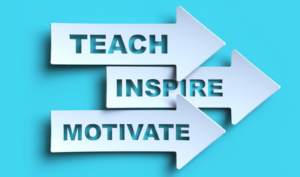
The Future of Recognition: Where Do Employers Go From Here?
What an exhilarating experience! I just wrapped up a panel discussion at the Achievers Recognition Next 2024 one-day deep-dive forum in Toronto. Immersive events can

What an exhilarating experience! I just wrapped up a panel discussion at the Achievers Recognition Next 2024 one-day deep-dive forum in Toronto. Immersive events can

One day on a trip to our local secondhand store, I stumbled upon two great finds. First, a 1983 version of Miss Manners’ Guide to

It’s a universal leadership challenge. In this new work-from-wherever world, how can we get the most from hybrid and remote teams? Will we find answers

Corporate learning and development (L&D) is at a crossroads. Today’s workforce desperately needs a skills update to prepare for the future of work, and old-school

Toxic cultures are like dark clouds looming over the world of work. Wherever they go, they wreak havoc with employee wellbeing. That’s not an overstatement.

Imagine this: You’re attending one of your company’s senior staff meetings. The CEO nods and smiles when one executive shares a KPI chart with an

You’re a business leader. You believe in your company with all your heart. Your commitment to the organization’s mission drives you to aim high, work

Sponsored by The Culture Platform What tools actually help managers manage their people? That’s the most important question every organization needs to ask itself as the

When it comes to implementing a successful engagement strategy, HR teams can’t afford to ignore employee expectations. Yet, research suggests that too many organizations forget

Change is an integral aspect of every organization — especially in today’s volatile environment. But managing change is challenging. That’s why it sometimes helps to

Data has percolated into every area of business — from the hiring process, to marketing programs, to charting a company’s strategy for the future. In

Sponsored by The Culture Platform At some point in the last 20 years, companies started to believe employee engagement should define a manager’s role. And

Employee appreciation is naturally top-of-mind for employers during the holiday season. But employees actually prefer recognition throughout the year. In fact, according to a HubSpot

Many managers and HR practitioners are familiar with 360 feedback as a leadership development practice. However, no two 360 feedback experiences look alike. That is

Nurturing employees’ sense of value is important for running a successful business, especially in 2021. With the ongoing shift to remote work, professional responsibilities are

I want you to look around at your employees — in person where possible, and on that Zoom call. Then, I want you to think

If we’ve learned anything over the past decade, it is the power of a hashtag… #WorkTrends has been on quite an adventure. Over the past

In an outlook where the future looks bleak, only true leaders guide their team through the storm and come out stronger on the other side.

In the past several months, many companies have modified their performance programs. From streamlining their review processes to running more frequent pulse surveys, organizations around

A large component of any work culture is how managers assess and review employee performance and chart progress. Given the remote and hybrid nature of

Listen to the full conversation and see our questions for the upcoming #WorkTrends Twitter Chat. And don’t forget to subscribe to the podcast, so you

Coronavirus has changed the way American businesses operate, to say the least. And from work-from-home mandates to reopening strategies to locking down again in the

The second in a two-piece series on Continuous Listening. In Part One of my series on Continuous Listening, I looked at the flaws of taking
This is the first in a two-piece guest series on Continuous Listening. Human Resources departments own many responsibilities that directly contribute to the overall success

Ed Catmull’s “Creativity, Inc.” offers effective strategies for leading creative teams. How can leaders use these to re-evaluate their own company dynamics?